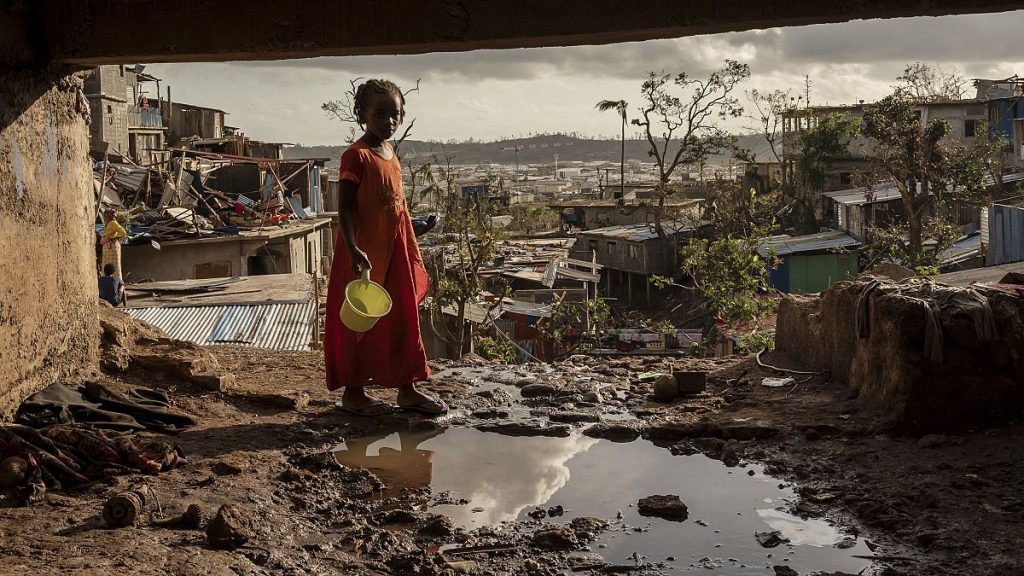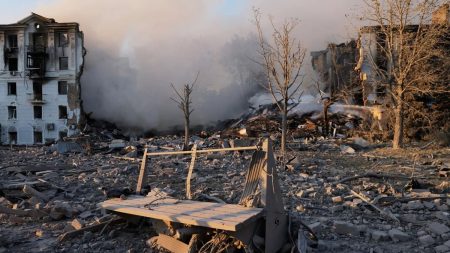Mayotte, a French archipelago nestled in the Indian Ocean off the coast of Africa, found itself bracing for another tropical cyclone barely a month after the devastating passage of Cyclone Chido. The impending storm, named Dikeledi, triggered a red alert across the islands as it churned westward from Madagascar, threatening to exacerbate the already dire situation left in Chido’s wake. While Dikeledi was not predicted to reach the intensity of its predecessor, the prospect of further destruction loomed large over the vulnerable population.
The memory of Chido’s fury remained fresh in the minds of Mayotte’s inhabitants. This catastrophic cyclone, the worst to strike the islands in nearly a century, had left a trail of devastation, claiming dozens of lives, injuring thousands, and rendering countless homes uninhabitable. The official death toll stood at 39, but grim estimates suggested that the true number of fatalities could be significantly higher. The widespread destruction, particularly in the densely populated shantytowns that house a substantial portion of the island’s inhabitants and migrants, painted a stark picture of vulnerability.
As Dikeledi approached, the French authorities mobilized emergency personnel and law enforcement, implementing protective measures in anticipation of the storm’s impact. While the cyclone was expected to weaken to a strong tropical storm before reaching Mayotte, the threat of powerful winds, torrential rain, and subsequent mudslides remained substantial. The fragile infrastructure, already severely compromised by Chido, was particularly susceptible to further damage from Dikeledi’s onslaught. The main concern, beyond the wind speeds, was the anticipated heavy rainfall which posed a significant risk of further mudslides, endangering lives and hindering recovery efforts.
The timing of Dikeledi’s arrival underscored the archipelago’s vulnerability during the cyclone season, which spans from November to April in the southwestern Indian Ocean. This region has become increasingly susceptible to intense tropical cyclones in recent years, a trend that highlights the growing challenge of climate change and its impact on vulnerable island communities. The geographical location of Mayotte, coupled with its socio-economic realities, particularly the prevalence of informal settlements, amplified the risks posed by these powerful storms. The archipelago, France’s poorest department, grappled with the daunting task of rebuilding while simultaneously preparing for the next potential disaster.
The consecutive cyclones, Chido and Dikeledi, exposed the precarious living conditions of many residents, especially the estimated 100,000 migrants who often reside in makeshift housing that offers little protection against the forces of nature. The archipelago, home to over 320,000 people, faced a complex challenge – balancing immediate relief and recovery efforts with long-term strategies to mitigate the risks of future cyclones and improve the resilience of its communities. The situation called for a comprehensive approach encompassing infrastructure improvements, disaster preparedness initiatives, and sustainable urban development to address the underlying vulnerabilities that exacerbate the impact of these recurring extreme weather events.
The experience of Mayotte serves as a stark reminder of the increasing frequency and intensity of extreme weather events globally and the disproportionate impact they have on vulnerable populations. The back-to-back cyclones underscore the urgency of addressing the underlying causes of climate change and implementing comprehensive disaster preparedness and mitigation strategies. The need for international cooperation and support to assist vulnerable regions in coping with the devastating effects of these climate-related disasters becomes ever more critical. The recovery and rebuilding process in Mayotte will require sustained efforts and substantial resources to not only repair the physical damage but also to address the underlying socio-economic vulnerabilities that exacerbate the impact of these extreme weather events.














